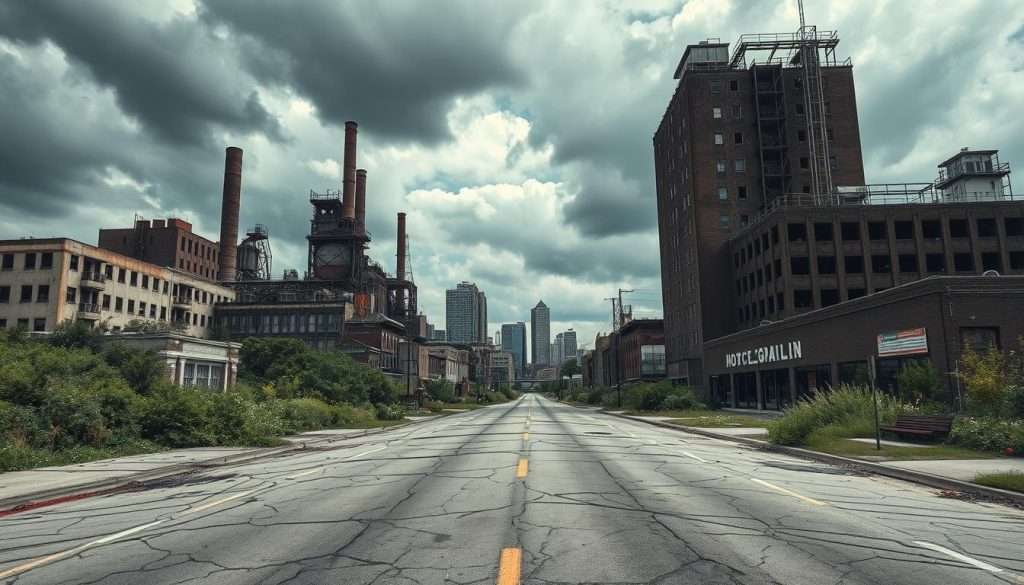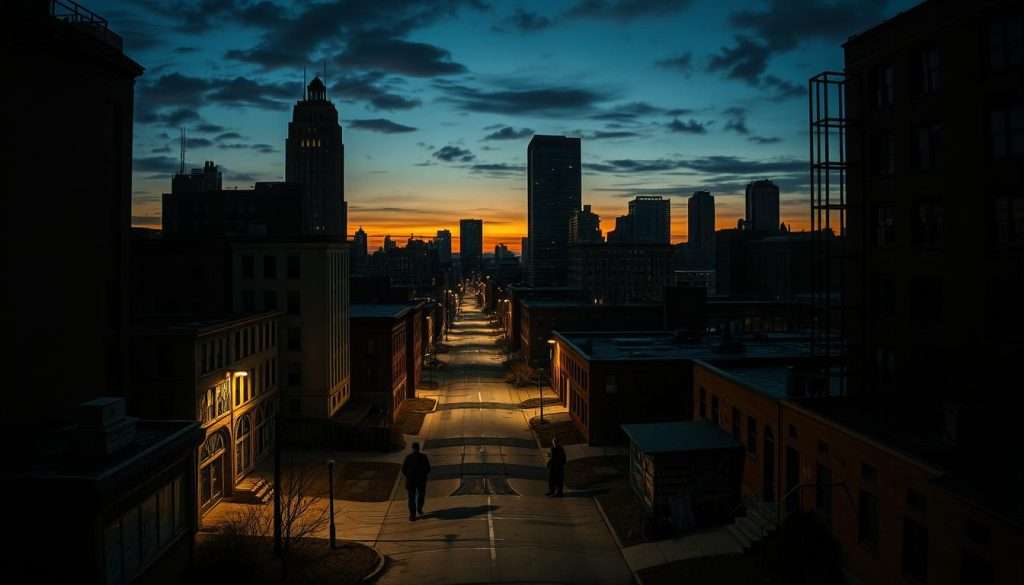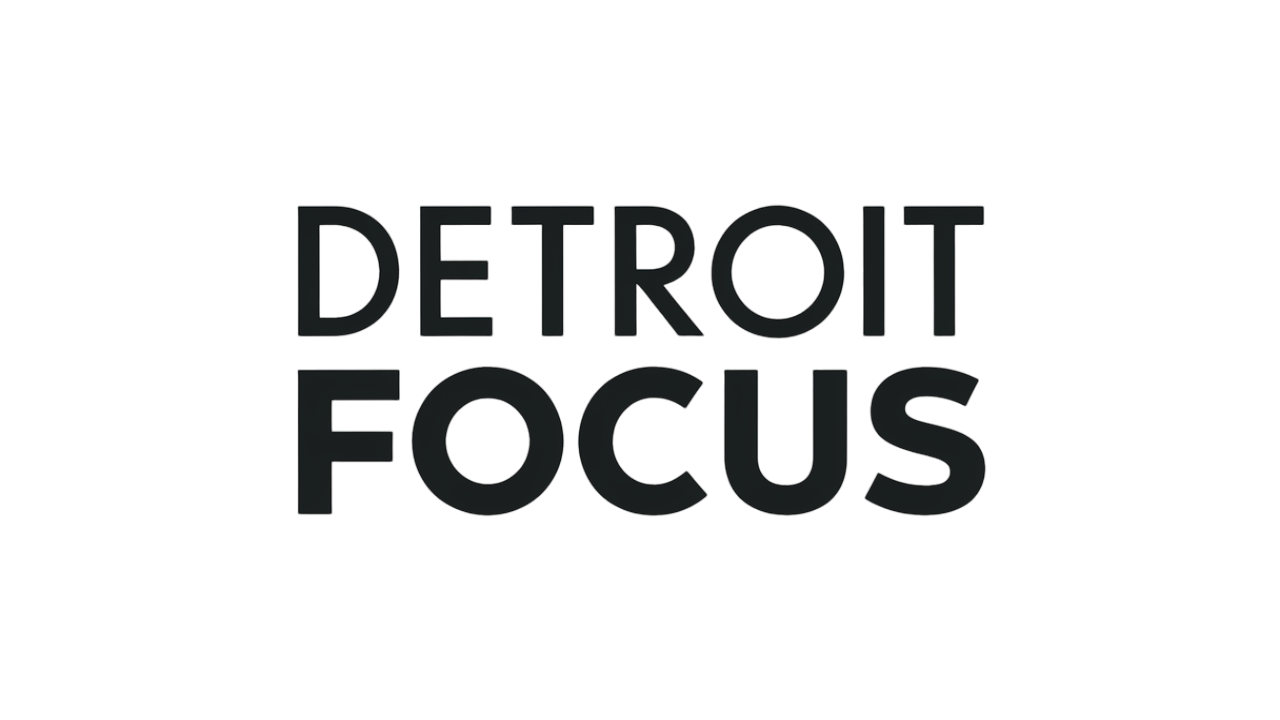Detroit was once a shining example of American innovation. Now, it’s a cautionary tale of urban decay. The city’s decline is linked to the loss of manufacturing jobs, especially in autos. This has left many without work and struggling with poverty.
The city’s population has dropped from 1.8 million in 1950 to about 700,000 today. This decline explains the widespread social problems in Detroit.
The city’s focus on cars is seen in its wide freeways. But, public transport has almost disappeared since the post-war era. This has made people feel disconnected from their community.
Time Magazine in 1961 highlighted the neglect in Detroit. It showed how the city’s environment was neglected, leading to a story of despair. This narrative has followed Detroit ever since.
Despite the neglect, Detroit is starting to show signs of resilience. Local efforts are working towards a brighter future. These efforts suggest that renewal is possible, even with ongoing challenges.
Economic Decline and Unemployment Issues
Detroit’s economy has seen big challenges, mainly because of the loss of its strong manufacturing sector. This loss hurt the Detroit unemployment rate a lot. Detroit, once a leader in car innovation, now fights to get back on track.
The Impact of Manufacturing Job Losses
From 1979 to 2008, the number of United Automobile Workers members fell from 1.5 million to just over 300,000. This loss of jobs and security hit the city hard. Detroit’s unemployment rate soared to over 16 percent, the highest among big American cities.
This decline led to a huge $18 billion bankruptcy in July. It showed Detroit’s deep financial trouble and the need to fix its economic problems.
Fleeing Residents: A Search for Opportunity
With fewer jobs, many people left Detroit for better chances elsewhere. The city’s population fell from nearly 2 million to about 700,000. This shows how tough life has become for Detroit.
Many families live below the poverty line, at about 36 percent. This loss of people adds to Detroit’s financial struggles.
Revitalization Efforts: Hope on the Horizon
Despite the challenges, there’s hope for Detroit. Big companies like Ford and Google are working together. They aim to turn old, run-down areas into lively spots.
These efforts focus on rebuilding Detroit’s economy and creating more jobs. They aim to turn Detroit’s decline around.

Crime and Safety Concerns
Detroit faces big challenges with crime and safety. This worries many people who live there and those thinking of moving. The Detroit crime rate is very high, making Detroit one of the most dangerous cities in the U.S. Even though things are getting a little better, the numbers show a lot of problems.
Crime Rates: The Numbers Speak
Looking at the numbers, the situation is scary. In 2021, Detroit had a violent crime rate of about 1,965 per 100,000 people. This is way higher than the national average of 398.6 per 100,000. Also, property crime rates were over 3,000 per 100,000, much higher than the national average of 2,000.
But, there’s hope for change. Recent trends show things might be getting better:
| Year | Violent Crime Rate (per 100,000 residents) | Property Crime Rate (per 100,000 residents) | Homicides (total) |
|---|---|---|---|
| 2021 | 1,965 | Over 3,000 | Highest in decades |
| 2023 | 10% decrease in violent crime | 15.1% decrease | Lowest in 57 years |
| Q1 2024 | 15.2% decrease | 15.1% decrease | Data not yet available |
Community Impact: Fear vs. Reality
Even though the Detroit crime rate is high, there are efforts to change things. Places like Palmer Woods are safer, with crime rates of 2,059 per 100,000. But, areas like Brightmoor and Oakwood Heights have a lot of crime. This makes some people think Detroit is not safe.

The difference in crime rates between neighborhoods shows the Detroit social problems that still exist. Some people don’t feel safe. A poll showed 80% of people thought crime in Detroit was bad. But, knowing about safer areas can help people feel more secure.
Education System: A Struggling Landscape
The education system in Detroit is facing big problems. Schools don’t have enough money to help their students. This is shown in the numbers: only 6% of high school students do well in math, and 4% in science.
Also, two-thirds of students have trouble reading. This shows a big problem in how we teach.
Public School Challenges: Funding Woes
Detroit public schools owe a lot of money. They have an operating debt of $483 million and a total debt of $1.54 billion. This money problem makes it hard to focus on learning.
The state’s emergency manager is mainly trying to pay off this debt. A new school board is trying to help. But, until the money problems are fixed, schools can’t improve much.
Alternative Solutions: Charter Schools and Beyond
Charter schools are a good option for many families. Over 60,000 students have chosen charter schools or moved to the suburbs for better schools. The New Detroit Education Commission wants to help all schools.
This shows we need a big plan to make schools better in Detroit.
| Metric | Detroit Public Schools | National Average |
|---|---|---|
| High School Proficiency in Math | 6% | 24% |
| High School Proficiency in Science | 4% | 22% |
| Reading Proficiency | 34% | 38% |
Infrastructure and Urban Decay
Detroit faces big challenges with its infrastructure. Years of neglect have caused problems. Roads are filled with potholes and public transport is struggling.
Road Conditions: Potholes and More
The roads in Detroit are very bad. They wear out cars and make driving hard. Experts say the city’s roads need a lot of fixing.
This bad state of roads is a big problem. It affects safety and how easy it is to get around. The city’s infrastructure got a low grade from experts.
Abandoned Properties: Wasteland or Opportunity?
There are many empty buildings in Detroit. About 40 square miles of land is vacant. This shows how much the city has decayed over time.
But, this empty land could be used for good things. City planners want to turn it into gardens, new homes, and art. This could make the city look better and help the community.
Companies like Ford and Google are also helping. They are fixing up neighborhoods and helping the local economy. This could make Detroit a better place again.
To learn more about Detroit’s problems, check out this article here.
| Year | Population Change | Vacant Land (Square Miles) | Poverty Rate |
|---|---|---|---|
| 1950 | Start | 0 | 14.9% |
| 2010 | -61.4% | 40 | 33.2% |
Cultural Resilience and the Path Forward
Detroit’s culture is strong, especially in arts and music. The city gave us Motown and techno. This shows that creativity can grow even when things are tough.
Arts and Music: Detroit’s Soul Prevails
Music and arts in Detroit are a source of hope. They connect people and make them feel part of something bigger. Artists help bring neighborhoods back to life and unite different groups.
Cultural events and festivals celebrate Detroit’s history. They show off local talent and help the city grow artistically.
Community Initiatives: Grassroots Movements
Grassroots efforts are key to Detroit’s future. Projects like community gardens and art groups show the city’s spirit. They fight against decay and bring people together for change.
Businesses like Avalon Bakery and Spiral Collective support local pride. They help the city stay strong and grow economically.
